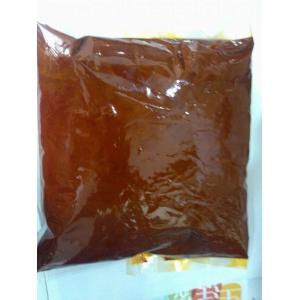high quality Marigold extract Lutein Oil/xanthophyll20%
Add to Cart
Product Name: Marigold extract /Calendula extract
Part Used: Fruit/flower
Active Ingredient: lutein
Test Mothod: UV/HPLC
Extraction method:water/acohold extraction
Our Extract Specifications:
| Product Name/Code | Specification | Test Method |
| Calendula extract | ≥5%-90%lutein | HPLC/UV |
| ≥5% xanthophyll | HPLC | |
| ETC |
What is
Calendula is a genus of about 15–20 species of annual and perennial herbaceous plants in the daisy family Asteraceae that are often known as marigolds. They are native to southwestern Asia, western Europe, Macaronesia, and the Mediterranean. Other plants are also known as marigolds, such as corn marigold, desert marigold, marsh marigold, and plants of the genus Tagetes. The genus name Calendula is a modern Latin diminutive of calendae, meaning "little calendar", "little clock" or possibly "little weather-glass". The common name "marigold" refers to the Virgin Mary. The most commonly cultivated and used member of the genus is the pot marigold (Calendula officinalis). Popular herbal and cosmetic products named 'calendula' invariably derive from C. Officinalis.
Culinary use
Calendula species have been used in cooking for centuries. The flowers were a common ingredient in German soups and stews, which explains the nickname "pot marigold". The lovely golden petals were also used to add color to butter and cheese. The flowers are traditional ingredients in Mediterranean and Middle Eastern dishes. Calendula tea provides health benefits, as well as being delicious.
Dye use
The beautiful flowers were once used as a source of dye for fabrics. By using different mordants, a variety of yellows, oranges and browns could be obtained.
Medicinal use
Ancient cultures recognized and used the healing properties of calendula. In some of the earliest medical writings, calendula was recommended for treating ailments of the digestive tract. It was used to detoxify the liver and gall bladder. The flowers were applied to cuts and wounds to stop bleeding, prevent infection and speed healing. Calendula was also used for various women's ailments, and to treat a number of skin conditions. During the American Civil War, calendula flowers were used on the battlefields in open wounds as antihemorrhagic and antiseptic, and they were used in dressing wounds to promote healing. Calendula also was used in this way during World War I. Calendula has been historically significant in medicine in many cultures, and it is still important in alternative medicine today.
Function
1).Protect skin from the harmful solar ray.
2).Protect skin through reducing the risk of macular degenration.
3).Prevent cardiopathy and cancer and resist arteriosclerosis.
4).Prevent retina against oxidation when absorb light
5).Anti-cancer and preventing diffuse of cancer cell
6).Promote eyes' health



